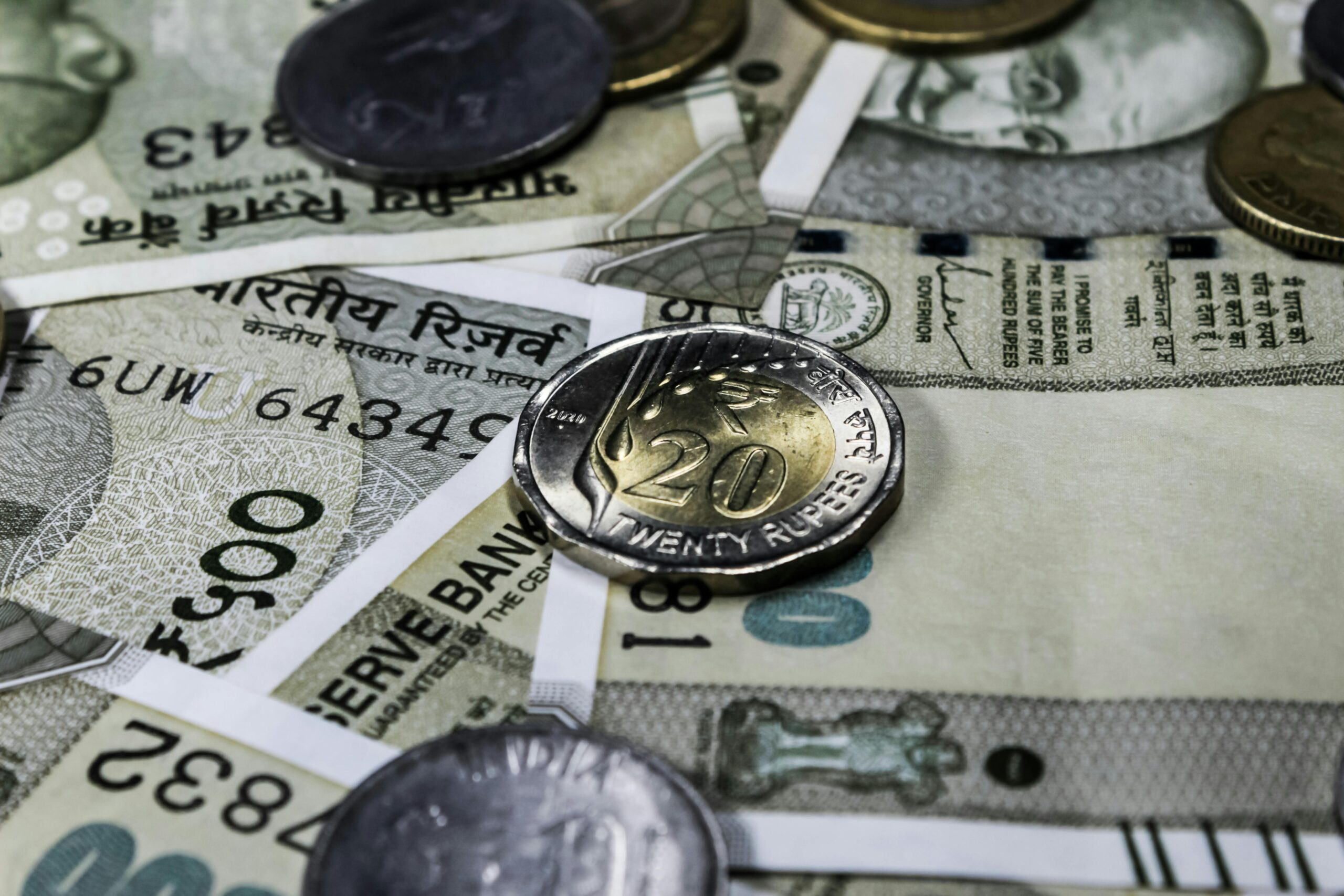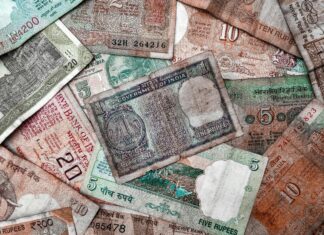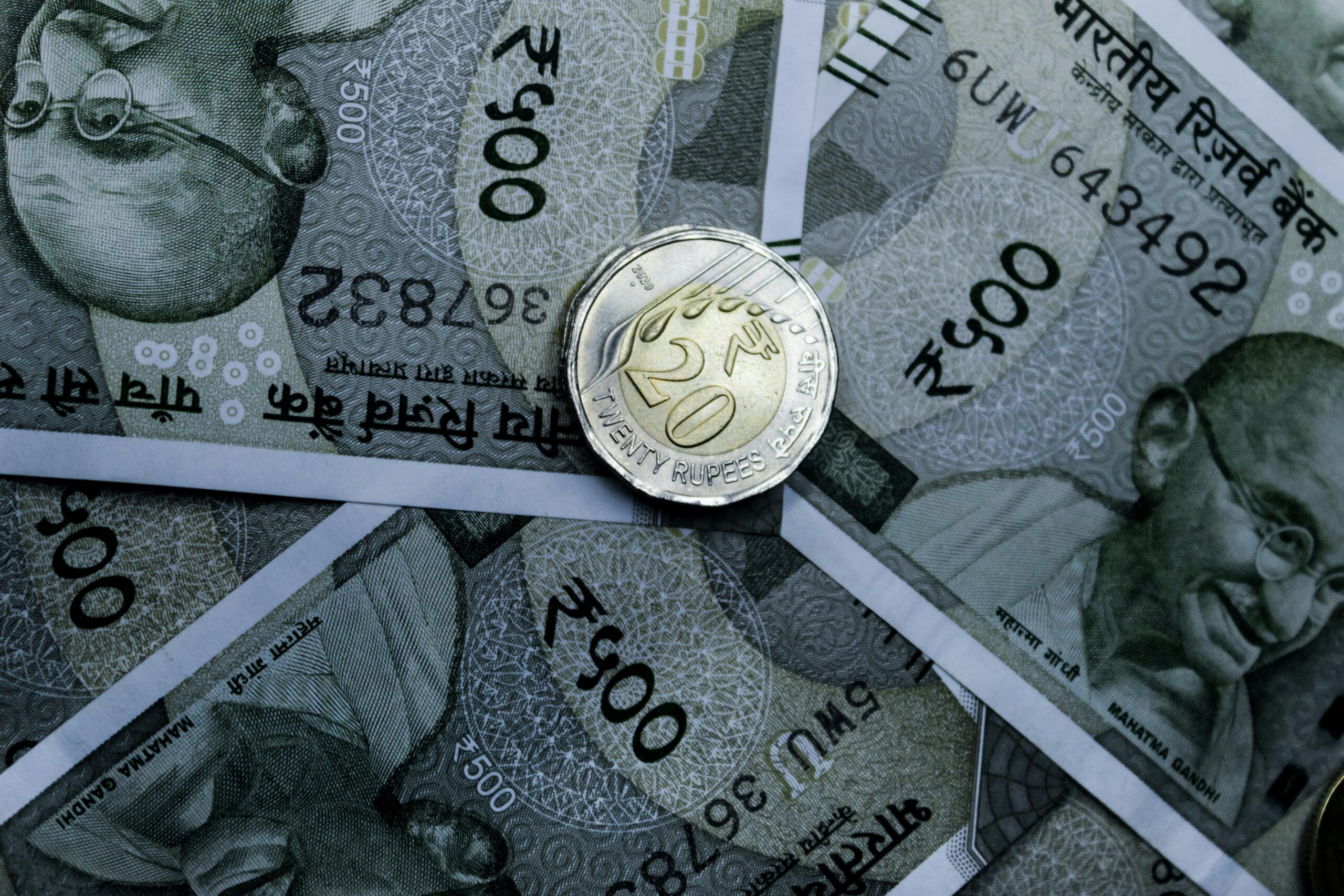Are you looking for the Central Bank of India IFSC code? You might be wondering what exactly is IFSC code, and why it’s crucial for online transactions. The Indian Financial System Code (IFSC) is a unique alphanumeric code that helps you to identify a specific bank branch during electronic fund transfers. But, do you know how to find the Central Bank of India IFSC code for your branch? With the rise of digital banking, understanding this code has never been more important, especially for seamless transactions. Whether you’re transferring money, paying bills, or making investments, knowing the correct IFSC code can save you from unnecessary hassles. Did you know that the Central Bank of India has thousands of branches across the nation, each with its own unique code? This means that one wrong digit can lead to your funds going astray. In this post, we will delve deeper into the significance of the Central Bank of India IFSC code, how to locate it, and tips for using it effectively. So, are you ready to unlock the secrets of hassle-free banking? Let’s dive in!
Everything You Need to Know About Central Bank of India IFSC Codes: A Comprehensive Guide for Savvy Bankers
The Central Bank of India, you know, the one that’s been around since ages, has this thing called an IFSC code. Now, if you’re like me, you’re probably scratching your head and thinking, “What in the world is an IFSC code?” Not really sure why this matters, but it’s a pretty crucial part of banking, especially if you’re doing any online transactions or transferring money. So let’s dive into this, shall we?
First off, an IFSC code, which stands for Indian Financial System Code, is basically like a bank’s unique identifier. It’s used for electronic funds transfer, like NEFT, RTGS, and IMPS. Every bank branch has its own IFSC code, and you generally need it when you sending money from one bank to another. Central Bank of India IFSC code is a must-know if you’re dealing with this bank.
Now, let’s break down how the Central Bank of India IFSC code looks. It’s an alphanumeric code, which means it has both letters and numbers. Typically, it’s 11 characters long. The first four characters is always “CBIN” for Central Bank of India. The fifth character is always a “0” and the last six characters is usually the branch code. Confusing? Yeah, maybe it’s just me, but it can be a bit of a head-scratcher at first.
Here’s a little table to help clarify.
| IFSC Code Format | Description |
|---|---|
| First 4 Characters | Bank Identifier (CBIN) |
| 5th Character | Always “0” |
| Last 6 Characters | Branch Code (Unique for each branch) |
So, if you wanted to send money to a branch of the Central Bank of India, you’d need to find the specific Central Bank of India IFSC code for that branch. It’s like trying to find a needle in a haystack sometimes. I mean, who has time for that? But hey, it’s better than sending money into the void!
Now, let’s say you’re sitting there, thinking, “Great, but where do I even find this IFSC code?” Well, you could always go to the bank’s official website and hunt around like a treasure seeker, or you could simply do a quick Google search. Just type in “Central Bank of India IFSC code” followed by your branch name, and voila! It’s like magic, but not really.
Also, if you’re one of those people who likes to keep things organized (not really sure how you do that, but kudos), you might want to create a little sheet where you can store all the Central Bank of India IFSC code for your different branches. Maybe even color-code it or something. Just a thought!
Now, if you’re like me and tend to forget things, writing it down could save you a whole lot of trouble later. You know how it goes—one minute you’re transferring money, and the next minute you’re Googling “What’s the IFSC code for my bank?” because your memory decided to take a vacation.
Here’s a little list of things you should keep in mind about the Central Bank of India IFSC code:
- Always Double-Check: Seriously, if you mess it up, your money could go who knows where.
- Use Official Sources: Don’t trust just any random website. Stick to the bank’s site or trusted financial services.
- Stay Updated: Sometimes branches change their codes. It’s like a game of musical chairs, but with your money.
- Keep It Handy: Save it in your phone or write it down. You never know when you’ll need it.
And let’s talk about why this even matters. I mean, can’t we just wing it? But no, if you don’t have the right Central Bank of India IFSC code, your transaction could fail, and then you’re left staring at your screen like, “What just happened?” It’s all about making sure your money gets to the right place, and trust me, you don’t want to end up in a situation where it doesn’t.
In short, the Central Bank of India IFSC code is a necessary evil in the world of banking. It’s not the most exciting topic, but it’s super important if you want to keep your financial transactions smooth and hassle-free. So, keep that code handy, and you’ll be just fine!
Top 5 Benefits of Using Central Bank of India IFSC Codes: Maximize Your Banking Experience Today
Alrighty, let’s dive into the somewhat murky waters of the Central Bank of India IFSC code. If you’re looking for a clear-cut explanation, well, not really sure why you’re here then! But hey, let’s try to make sense of this whole code business together, shall we?
First off, the IFSC code, which stands for Indian Financial System Code. It’s like a secret handshake for banks, allowing them to know where to send money. So, when you’re transferring funds, you gotta have this code, or it’s like trying to send a letter without an address. And trust me, nobody likes to receive mail that goes nowhere.
Now, the Central Bank of India IFSC code is specially designed for their branches, which is pretty neat if you think about it. Each branch has a unique code that starts with “CBIN”, followed by a set of digits. This code is like the branch’s social security number, but, ya know, for banks.
Here’s a handy table that lists a few Central Bank of India IFSC codes from different regions:
| Branch Name | IFSC Code |
|---|---|
| Mumbai | CBIN0281011 |
| Delhi | CBIN0281012 |
| Bangalore | CBIN0281013 |
| Chennai | CBIN0281014 |
| Kolkata | CBIN0281015 |
You might be thinking, “Why do I need to memorize this?” Honestly, you don’t have to, unless you’re planning to impress your friends at a dinner party with your banking knowledge. But, maybe it’s just me, I feel like knowing one or two codes could come in handy someday—like when you’re sending money to your pal who’s always broke!
To use these codes, you generally enter them in your bank’s online transfer portal. It’s usually a pretty straightforward process, but if you mess it up, the money could end up in some random branch, and that’s just a recipe for disaster. So, pay attention, alright?
Now, speaking of codes, there are a few things you oughta keep in mind when you’re dealing with the Central Bank of India IFSC code. Like, what’s the deal with the last six digits? They’re not just hanging around for fun, you know? They actually represent the branch code. So, if you see the same IFSC code popping up in different branches, it’s probably because they belong to different locations. Confusing, right? But, that’s banking for ya!
Also, you can find the IFSC code on the bank’s website, or if you’re feeling super adventurous, just take a stroll to your nearest branch. They love visitors, especially if you bring questions! Remember, it’s a good idea to double-check the code before making any transfers. Mistakes happen, and nobody wants to accidentally send their rent money to the wrong person.
Here’s a fun list of things you might need to do with the Central Bank of India IFSC code:
- Online Fund Transfers: Use it for NEFT, RTGS and IMPS transactions.
- Cheque Payments: If you’re still living in the 90s and using cheques, you’ll need it.
- Banking Apps: Most mobile banking apps ask for it to ensure your funds go to the right place.
- International Transfers: Sometimes, you might need it for remittances, just double check with your bank.
Now, let’s not forget about how to search for the Central Bank of India IFSC code. You can always do a quick Google search, but here’s a tip: be specific. Typing “Central Bank of India IFSC code branch name” usually gets you what you need quicker than trying to sift through endless results.
And, hey, if you’re still confused, don’t hesitate to ask your bank for help. They’re there to assist you, even if they seem a bit too busy scrolling through their phones. Seriously though, just walk in and ask. You might get some funny looks, but what’s the worst that could happen?
In the grand scheme of things, the Central Bank of India IFSC code might not seem like a big deal, but it’s one of those little things that keep the banking world spinning. So, next time you hear someone mention it, you can nod along knowingly, or just smile and pretend to understand. Either way, you’ve got the info now, and that’s something to hold onto, right?
So, if you ever need to make a transfer, just remember to grab that IFSC code first, or you might find yourself in a pickle. And nobody likes pickles—unless you’re into that
How to Easily Find Your Central Bank of India IFSC Code: Step-by-Step Instructions for Every Customer
So, you wanna know about the Central Bank of India IFSC code? Well, let’s dive into this, but forewarning, you might feel like you’re swimming in a sea of letters and numbers. Not really sure why this matters, but hey, let’s figure it out together.
First off, what the heck is an IFSC code? It stands for Indian Financial System Code, and it’s like the secret handshake of the banking world. This unique code helps in identifying bank branches during electronic fund transfers. And let me tell ya, without it, sending money can be like trying to find a needle in a haystack. So, let’s not get lost in the weeds and get to the good stuff.
Central Bank of India IFSC code is typically an 11-character alphanumeric code. It usually starts with “CBIN” followed by a five-digit branch code. So, if you’re looking for the IFSC code of a certain branch, you might wanna grab a pen, or you know, just use your phone to take notes. It’s not rocket science, but it can sometimes feel like it.
Here’s a handy table to simplify things a bit (or make it more confusing, who knows?):
| Branch Name | IFSC Code |
|---|---|
| Connaught Place, Delhi | CBIN0280123 |
| Bandra, Mumbai | CBIN0281111 |
| Andheri, Mumbai | CBIN0282222 |
| Pune, Maharashtra | CBIN0283333 |
| Bangalore, Karnataka | CBIN0284444 |
Now, maybe it’s just me, but I feel like the number of branches can make you dizzy. If you’re one of those people who’s always on the move, you might find yourself scratching your head trying to remember which code belongs to which branch. I mean, who has time for all that, right?
The Central Bank of India IFSC code is also really important for online transactions. If you don’t enter the correct code, your money could just be floating around in cyberspace for all eternity. And let’s be real, nobody wants to be “that person” whose money is lost because they typed in the wrong code. It’s like sending a letter without an address—good luck with that!
Here’s another thing to ponder: Did you know that the IFSC code changes depending on the type of transaction? Yep! For NEFT, RTGS, or IMPS, you might be looking at different codes. It’s like a game of musical chairs, but with your bank account. How fun! So, make sure you double-check before hitting that “send” button.
For those who like to live on the edge, here’s a quick list of how you can find your Central Bank of India IFSC code:
- Visit the official website of the Central Bank of India. (Duh, right?)
- Use the bank’s mobile app. It’s usually got all your banking needs in one place.
- Check your bank statement. Sometimes those little codes are hiding in plain sight.
- Call the bank’s customer service. If you’re feeling brave enough to talk to a real person.
- Google it. Because, of course, the internet knows everything. Just make sure it’s from a reliable source, or you might end up in a rabbit hole of misinformation.
Now, here’s a fun fact: the Central Bank of India was established in 1911, making it one of the oldest commercial banks in India. So, it’s been around long enough to know a thing or two about banking, right? But, like any old friend, sometimes it doesn’t keep up with all the tech.
Speaking of tech, I can’t stress enough how crucial it is to keep your IFSC code updated. If you’re switching branches or your bank decides to update their codes (because why not?), it’s good to be in the loop. Nothing worse than sending money to the wrong place and wondering why your friend isn’t picking up your calls after you’ve “accidentally” sent them a ton of cash.
So, to wrap things up (even though I said I wouldn’t), navigating the world of Central Bank of India IFSC code doesn’t have to be a headache. Just remember those tips, keep your codes handy, and maybe try not to overthink it. After all, banking should be simple, right? But then again, we all know life loves to throw curveballs at us. Good luck out there!
Why Understanding Central Bank of India IFSC Codes is Crucial for Your Financial Transactions: Don’t Miss Out!
So, let’s dive into the world of central bank of india ifsc code. You may be wondering what this whole IFSC code thing is, right? Like, does it even matter? Well, it kinda does if you’re into banking or, you know, moving money around like it’s Monopoly money or somethin’.
First off, IFSC stands for Indian Financial System Code. That’s a mouthful, ain’t it? It’s a unique code that helps to identify a bank branch for electronic funds transfer. Not really sure why this matters, but if you wanna transfer money using NEFT, RTGS, or IMPS, you’re gonna need it. And let’s be honest, nobody wants their money lost in cyberspace, right?
Here’s a simple breakdown of the central bank of india ifsc code. This code consists of 11 characters. The first four letters represent the bank code, the fifth character is always ‘0’ (no idea why, must be a banker thing), and the last six characters are for the branch code. So, if you thought it was gonna be easy peasy, think again.
| Part of Code | Description |
|---|---|
| First 4 Letters | Bank Code (e.g., CBIN for Central Bank) |
| 5th Character | Always ‘0’ |
| Last 6 Characters | Branch Code (specific to your branch) |
Now, if you were trying to find the IFSC code for Central Bank of India, you might be thinking, “Where do I even start?” Well, you can visit the official Central Bank website, or you could just Google it. I mean, who actually visits bank websites anymore? But here’s a little tip: always check for the latest info, because codes can change. It’s like changing passwords—annoying but necessary.
Here’s a list of some popular branches of Central Bank of India along with their IFSC codes. This might just save you some time.
| Branch Name | IFSC Code |
|---|---|
| Mumbai Main Branch | CBIN0280364 |
| Delhi Connaught Place | CBIN0280125 |
| Bangalore Branch | CBIN0280440 |
| Chennai Branch | CBIN0280161 |
Maybe it’s just me, but it feels like the more branches there are, the more complicated it gets. You’d think that with all this technology, finding a simple code wouldn’t be rocket science. But hey, if you mess up the code, your money could end up in the wrong hands. Yikes!
So, how do you go about using this central bank of india ifsc code? It’s pretty straightforward. When you’re filling out forms for any electronic transfer, just pop in the code, and voilà! But remember, if you’re not paying attention, you might end up with a headache. Trust me, I know from experience. It’s like typing your password wrong for the millionth time. Super frustrating!
If you’re into banking apps, most of them have an option to search for the IFSC code too. Just enter the name of the bank and the branch, and it’ll spit out the code faster than you can say “fund transfer.” But again, always double-check it. Because, well, who doesn’t love a good bank error? (Not really, but you get the point.)
And speaking of checking, make sure to keep your central bank of india ifsc code handy. You never know when you’ll need it. Maybe you’re paying for that online shopping spree you didn’t really need. Or, perhaps you’re helping out a friend in need of cash. Either way, this code can be your friend or your foe.
Oh, and if you’re still confused, don’t sweat it. You’re not alone in this. Many people scratch their heads over this stuff. It’s like trying to decode a secret message. There’s just so much info out there, and it can be overwhelming. But don’t worry, the next time you hear someone talk about central bank of india ifsc code, you can nod along and pretend you know exactly what’s up.
So, in short, the IFSC code is a vital part of banking in India. Even if it feels like a pain sometimes, getting it right is super important. Whether you’re transferring money to a friend or paying for that pizza that you just couldn’t resist, don’t forget the code. It could save you from a world of hurt—or at least from a very awkward conversation with your bank. Happy banking!
The Ultimate FAQ Guide to Central Bank of India IFSC Codes: Answers to Your Most Pressing Questions
Alright, let’s dive into the world of the Central Bank of India and its IFSC code, which is kind of a big deal if you’re into banking or, ya know, moving money around. So, first off, what is an Central Bank of India IFSC code? It stands for Indian Financial System Code, and it’s like a secret handshake for banks. But, honestly, not really sure why this matters, but it does if you’re sending or receiving money.
Now, the Central Bank of India, it’s been around since, like, forever, established in 1911. Yeah, that’s right! More than a century of banking. Can you believe it? They’ve got a huge network of branches all over the country. And each one of those branches has its own unique Central Bank of India IFSC code.
Just so you know, the whole IFSC thingy consists of 11 characters, which is kinda fun, but also if you’re not paying attention, it can be a pain to remember. The first four characters are always “CBIN”, which is like saying, “Hey, I’m from the Central Bank of India!” and then the next six are specific to the branch, and the last character is often a zero. Like, who decided this? Maybe it’s just me, but I feel like they could have made it a bit simpler.
Here’s a quick table of some key Central Bank of India IFSC codes for popular branches, just in case you need them.
| Branch Name | Location | IFSC Code |
|---|---|---|
| Central Bank of India, Mumbai | Mumbai, Maharashtra | CBIN0281234 |
| Central Bank of India, Delhi | New Delhi, Delhi | CBIN0285678 |
| Central Bank of India, Bangalore | Bangalore, Karnataka | CBIN0289101 |
| Central Bank of India, Chennai | Chennai, Tamil Nadu | CBIN0282345 |
| Central Bank of India, Kolkata | Kolkata, West Bengal | CBIN0286789 |
Now, if you’re looking to transfer money, you gotta have the right Central Bank of India IFSC code. It’s like trying to send a letter without an address. I mean, good luck with that! If you mess up the code, your money could end up in some black hole of banking, and who knows when you’ll see it again?
Here’s a little breakdown of how to find the Central Bank of India IFSC code for your specific branch:
Visit the official website: Yeah, it’s a bit boring, but the Central Bank of India has a super handy tool just for this. Search for “IFSC code” on their site, and you’re golden.
Bank statements: If you got a bank statement lying around, check that out! The IFSC code is often printed there, like a little treasure waiting to be discovered.
Mobile banking app: If you’re one of those tech-savvy folks, just head over to your Central Bank of India mobile app. They usually have the IFSC codes listed, because why not make life easier?
Google it: I mean, Google knows everything, right? Just type in “Central Bank of India IFSC code for [branch name]” and voilà, it’s like magic.
Now, let’s throw in a little fun fact while we’re at it! Did you know that the Central Bank of India IFSC code is used for electronic fund transfers? Yep, stuff like NEFT, RTGS, and IMPS, which sounds fancy but is really just a way to get money from point A to point B without having to physically travel there.
But here’s where it gets a bit fuzzy. Sometimes, different branches in the same city might have similar codes, and it’s like, come on, can’t we be a bit more creative? Or maybe I’m just overthinking it. If you’re ever in doubt, just double-check it, because the last thing you want is your money going on an unexpected vacation.
Also, if you’re a fan of online shopping, knowing the Central Bank of India IFSC code can help you out when you’re trying to pay for stuff online. You just plug it in, and it’s like, “Boom! Transaction complete!” But if you get it wrong, it’s back to square one. Frustrating, right?
So, remember, next time you need to send some cash, keep that Central Bank of India IFSC code handy. It’s like having a VIP pass to the banking world. And who doesn’t want that?
Conclusion
In conclusion, understanding the Central Bank of India IFSC code is crucial for anyone engaged in online banking transactions, whether for personal or business purposes. The IFSC code, which stands for Indian Financial System Code, is essential for ensuring secure and efficient electronic fund transfers through NEFT, RTGS, and IMPS. We discussed how to locate the IFSC code for different branches, its significance in preventing errors during transactions, and the role it plays in the broader banking infrastructure. As digital banking continues to grow, staying informed about these details can help you navigate your financial transactions with confidence. For anyone looking to make smooth and secure transactions, we encourage you to familiarize yourself with the IFSC codes relevant to your banking needs. Don’t hesitate to reach out to your local branch or visit the official Central Bank of India website for more detailed information.






























































